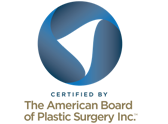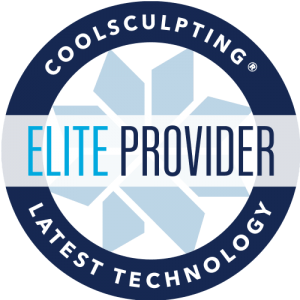Hair Loss/Replacement Treatments
-
NeoGraft Hair Loss ReplacementDr. Robbins and Des Moines Plastic Surgery™ are pleased to be the first practice in Iowa to offer NeoGraft™ Hair Transplant Surgery. Hair loss affects 38 million men and 21 million women. Hair loss represents a major issue for many individuals. Statistics compiled by the International Society of Hair Restoration Surgery (ISHRS) show hair restoration surgery increased 47.9% since 2008. Up until now, there was essentially only one invasive method of hair transplant- the strip method. The strip method involves removing a strip of hair bearing scalp from the back of the head and transplanting the individual hair follicles in the non hair bearing areas. The procedure worked well but many patients objected to the large scar from the harvest site. The scar could be visible, painful, and dictated how short the patient’s hair had to be worn for fear of showing the large scar. Also, the strip method was invasive, requiring stitches and a prolonged recovery period. NeoGraft™ is the new method of follicular hair transplantation with no scars and minimal downtime. Click here for further detail and to learn more about the NeoGraft procedure for men and women.NeoGraft™ has revolutionized the world’s approach to minimally invasive hair loss treatments, and this no-touch implantation procedure is now available in Central Iowa. At Des Moines Plastic Surgery™, we believe that men and women suffering from hair loss in Des Moines, Ankeny, Omaha and across the Midwest deserve to benefit from this “minimally invasive” option which has proven to yield results far superior to current long-time hair transplant methods and treatments. That is why Dr. Robbins utilizes the revolutionary patented NeoGraft Automated Follicular Unit Extraction (FUE) and Implantation Hair Transplant System. This system is the first and only Class One FDA Listed automated medical device for hair restoration. NeoGraft™ harvests, collects and implants individual follicular grafts using one safe and effective user friendly platform. No more strip method of hair transplantation.
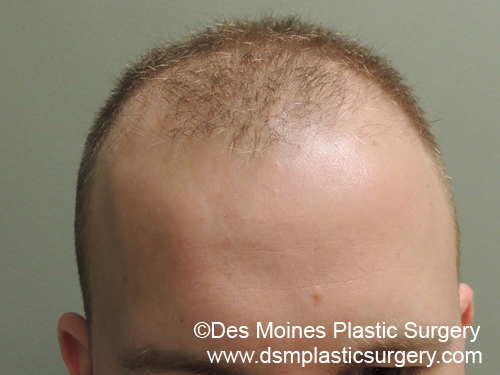 * Individual results may vary.
* Individual results may vary.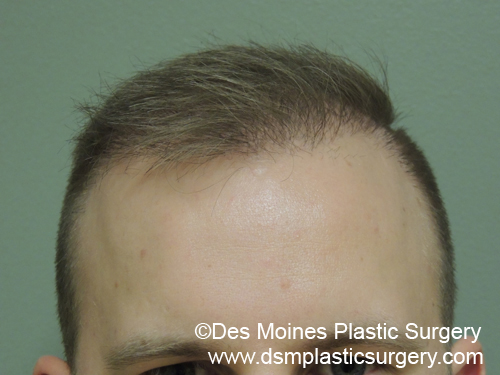
Photo Gallery
View before-and-after pictures of real patients of Dr. David Robbins
-
Types of Hair RestorationThere are 2 main types of hair restoration techniques used today: the “strip” method and Follicular Unit Extraction (FUE). NeoGraft™ is the type of FUE hair replacement therapy used by Dr. Robbins at Des Moines Plastic Surgery™. The procedure of FUE involves gently removing hair follicles one-by-one. A single graft contains from 1-3 individual hair follicles. The traditional strip method approach involves incisions in the scalp to remove a strip of the hair bearing skin of the scalp. NeoGraft™ FUE on the other hand, uses a tiny 1 mm punch to remove individual follicles from the donor site. This technique has less bleeding, no excision of skin, no sutures, and a faster recovery. The transplanted hair follicles using NeoGraft™ are natural and grow just like normal hair.
-
Who is a good candidate for FUE using NeoGraft?Patients who would like the option of wearing a very short haircut in the back or sides of their scalp, or those who want the least amount of activity restriction (e.g. athletes) after their hair transplant procedure, may be good candidates for FUE with NeoGraft™. FUE can also be used for ‘scar camouflage’ procedures for patients who have had prior “Strip” procedures, as well as for body hair transplants.
-
Is FUE/NeoGraft suitable for both men and women?
-
How does the NeoGraft work?Dr. Robbins will perform NeoGraft™ hair transplantation using local anesthesia. The NeoGraft handpiece gently extracts individual micro hair grafts from hair bearing scalp. Each harvested graft is then placed into thinning or balding areas of the head. Each graft may contain 1-3 individual hair follicles. Once the transplant is complete, you will be able to return home and can resume your usual activities within a few days. After about 2 to 3 weeks, the transplanted hair will fall out but the transplanted hair follicle bulbs will remain under the skin. After 4 to 6 months, you will notice significant hair growth with final results after about 9 months to 1 year.
-
What are the advantages of NeoGraft hair transplantation at Des Moines Plastic Surgery™?98% success rate- that is, 98% of the transplanted grafts will survive and grow as normal hair. Least invasive procedure of its kind- only local anesthesia is needed.
- No-touch implantation
- Quality and consistent graft with no trimming
- No scalpel incision, no sutures, no linear scar
- Large areas in a single session- up to 3,000 grafts or as little as 250
- Fastest recovery time “next day,” of any surgical option- with Neograft™ you miss no work or social activities after the procedure
- Reduces the need for additional procedures
- Reduces overall costs of manual FUE procedures
-
How successful is hair transplantation?98% of the grafted hairs will grow.
-
How much hair can be grafted?250-3000 grafts in a session. 2500 grafts will cover an area about the size of a CD. More than 2500 grafts can be grafted but would require more than one session.
-
How long does the procedure take?It depends on the number of grafts. 500 grafts take about 4 hours. 2500 grafts take about 8 hours (4 hours to harvest the hair and 4 hours to implant). Patients can read, listen to music, watch TV, or use their computer. For longer cases, the patient will be provided a lunch break.
-
How long does it take to see hair growth?About 9-12 months, the new hair will begin to grow normally. It takes this long because of the natural slow growth process of hair.
-
When can I return to work?A few days off is typical but some patients return the next day to work and social activities. Strenuous activity should be avoided for a week. Click here for further detail about NeoGraft and see how this procedure can benefit you. If you are interested in learning more about NeoGraft™ hair transplantation at Des Moines Plastic Surgery™, call Dr. Robbins for your NeoGraft™ consultation at 515-221-9999.
-
Platelet-Rich Plasma and Hair Restoration at Des Moines Plastic Surgery™Dr. David Robbins uses platelet-rich plasma therapy (PRP) as a proactive treatment for patients experiencing thinning hair or as an adjunct to hair transplant procedures. PRP has been utilized for years as a way to stimulate growth of new cells in a variety of applications. PRP has recently received a great deal of press as it relates to treatments to restore youthful appearance to your skin. For example, Dr. Robbins uses PRP with lasers and microneedling to expedite healing and for anti-aging and improvement in skin texture and tone. Dr. Robbins uses PRP with the PRP Facial, PRP FaceLift, and PRP Vaginal Rejuvenation. PRP is the body’s natural healing elixir and acts as a natural fertilizer that stimulates stem cells to grow and repair aged and damaged tissue. PRP as it relates to hair growth is an exciting new non-surgical option for patients who may benefit from stimulation of hair growth and preventing further loss. PRP hair restoration does not re-grow hair but uses your own blood products to increase hair thickness and stimulates existing hair follicles to grow and is best applied to small areas of thinning hair, receding hairlines, and loss of hair volume. PRP is not meant to replace FDA approved medications to prevent hair loss but may be used in addition to these medications or may be an option for those who wish to not take medications or have side effects from these medications. PRP will complement the effects of minoxidil and DHT blockers. PRP hair restoration is also a great option for those who are not candidates for surgery or who want to delay formal hair transplant surgery. PRP can also be used after Neograft hair transplant to improve graft survival and speed of growth as well as to help prevent ongoing hair loss.
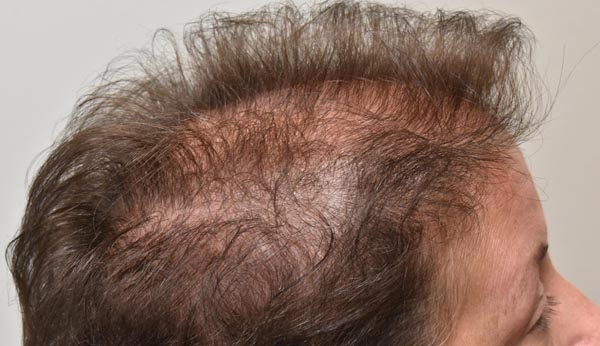 * Individual results may vary.
* Individual results may vary.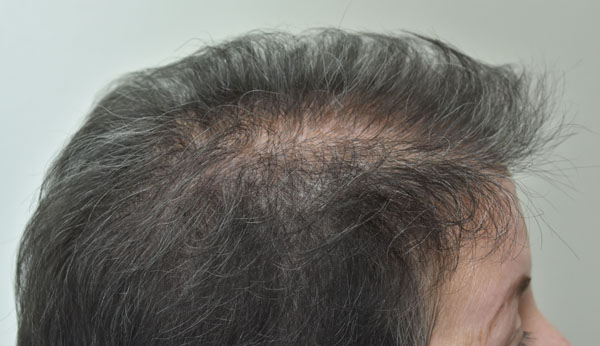
Photo Gallery
View before-and-after pictures of real patients of Dr. David Robbins
-
How does PRP hair restoration work?Platelet rich plasma (PRP) in human blood contains many growth factors that stimulate stem cells which have the ability to stimulate new cell and tissue growth and regeneration as well as tissue healing in the environment or location that the PRP is placed. Multiple medical publications over the past two decades confirm the safety and use of PRP therapy. PRP has been used with great success over the past 20 years in the fields of plastic surgery, reconstructive and wound healing treatments, oral surgery, neurosurgery, and orthopedics. PRP in the field of hair restoration is in its early stages and although no long term studies have been performed as it relates to its effectiveness, there is substantial evidence that PRP is a promising treatment option for hair growth. Extensive clinical trials are not complete and medical data is not yet published to establish the absolute effectiveness of PRP therapy in hair restoration. PRP should not be considered a “cure” for hair loss and no guarantee can be made about its individual effectiveness. The kits used to make the PRP are FDA approved. The kits are sterile and isolate the PRP in a very effective way.
-
How is the PRP hair restoration procedure performed?A small amount of blood (10mL- about a tablespoon) is drawn in our office just like a routine blood test. The blood is then spun in a centrifuge which will separate the platelet-rich plasma (PRP) from the other blood components which are not utilized. The highly concentrated platelet rich plasma (PRP) is then injected into the scalp. An additional technique uses Microneedling or a Profractional laser to make microscopic entry points in the skin of the scalp. PRP is then injected into the scalp. The procedure takes approximately 30 minutes and the patient may drive themselves home. Early studies suggest that the procedure be repeated every three to six months for best results. PRP hair restoration is an exciting and innovative therapy offered at Des Moines Plastic Surgery™ and we are pleased to be one of the few practices in the Midwest to offer this new treatment.


